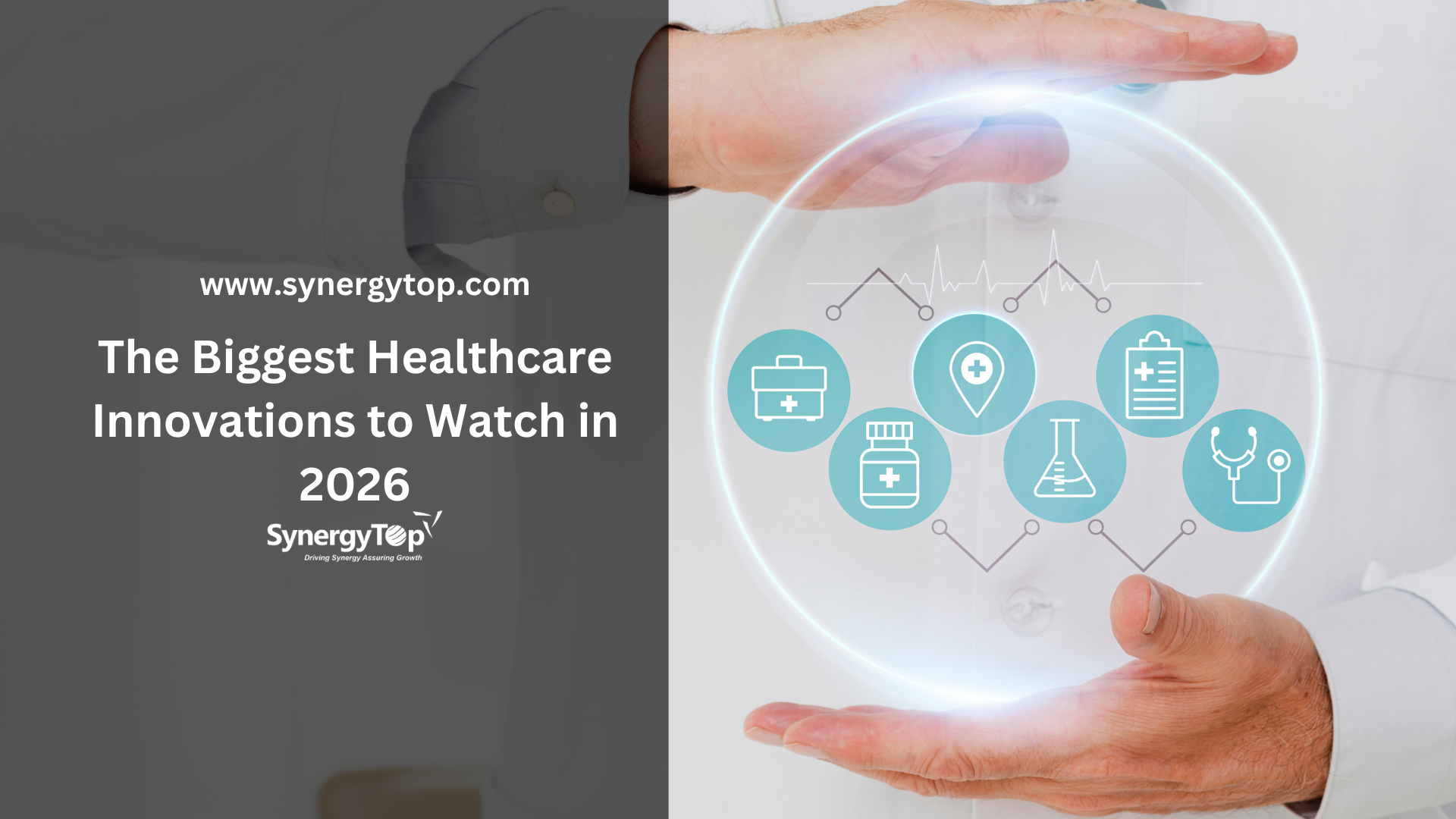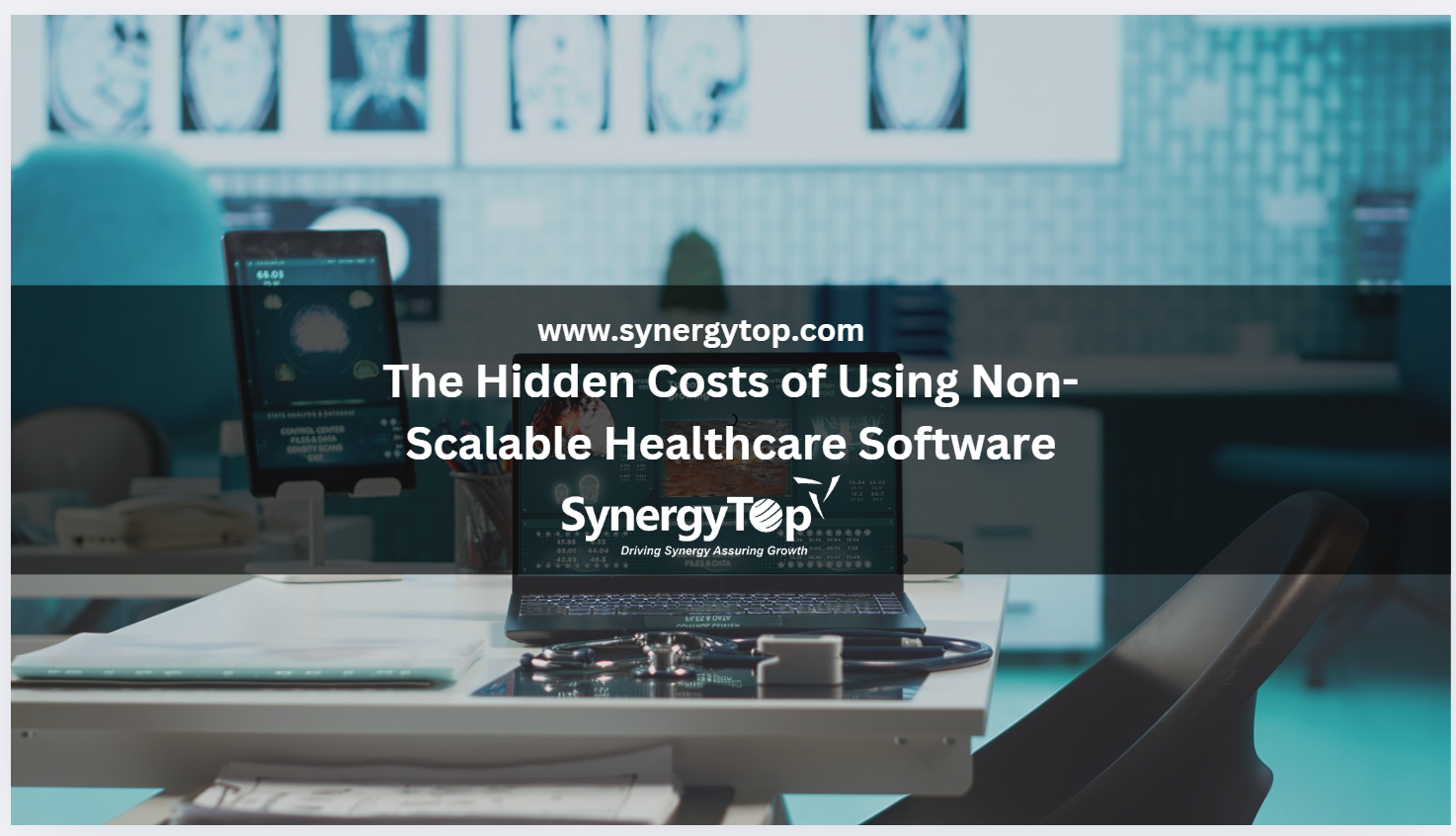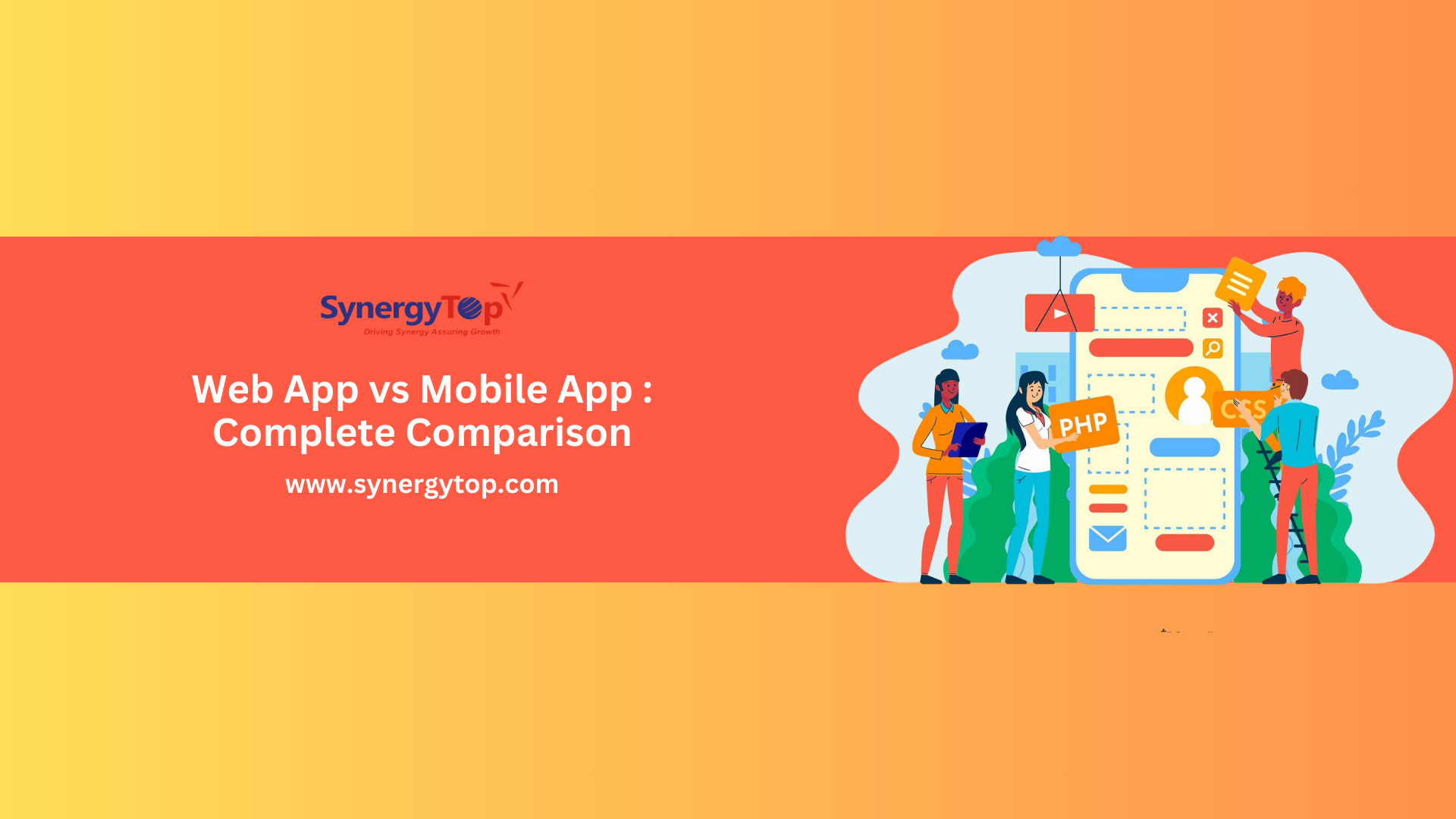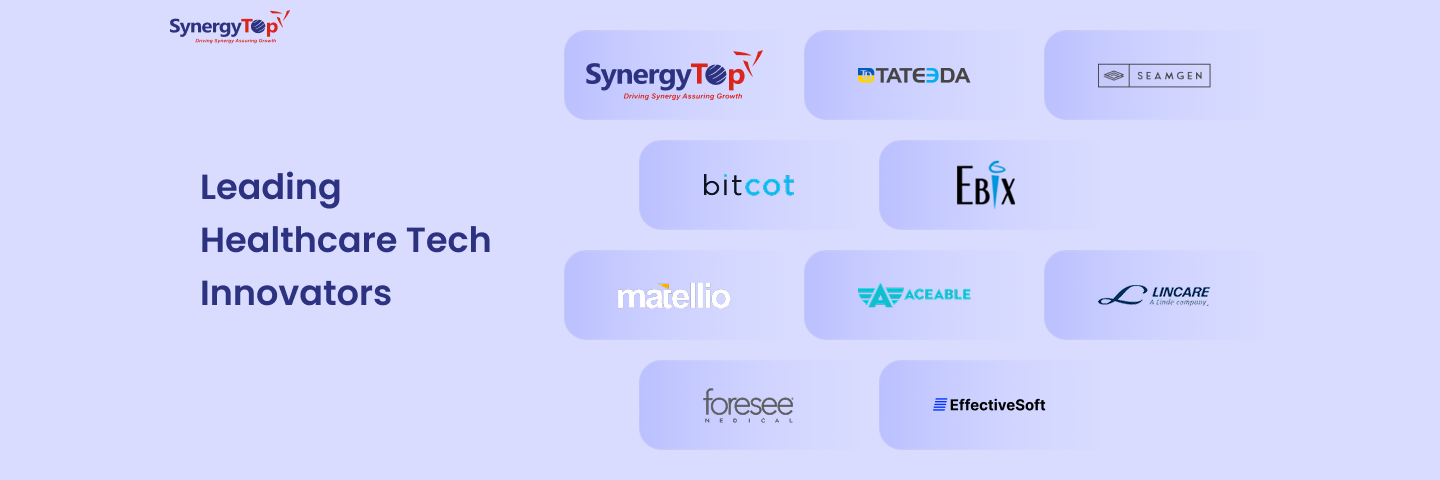Picture this: a busy doctor in their clinic.
- They get updates about patient vitals on their screens. While the patient is still at home.
- An AI agent helps them read through reports and suggests follow-up tests.
- Their clinic’s insurance claims are all automated. No running around.
- The paperwork at their facility is top-notch. All records are accessible with one click.
This isn’t a Hollywood script or the ‘future’ of healthcare. It is all happening right now. As we head into the second half of 2025, technology is transforming how care is delivered.
And this blog will walk you through the top 10 trends you need to know about.
At SynergyTop, we’ve spent years helping healthcare pros. From small clinics and big hospitals, we’ve been the tech partners helping healthcare professionals navigate the tech revolution. Based on our deep understanding of the domain, we have curated the top 10 trends shaping healthcare software development.
Read on.
Top 10 Healthcare Software Development Trends
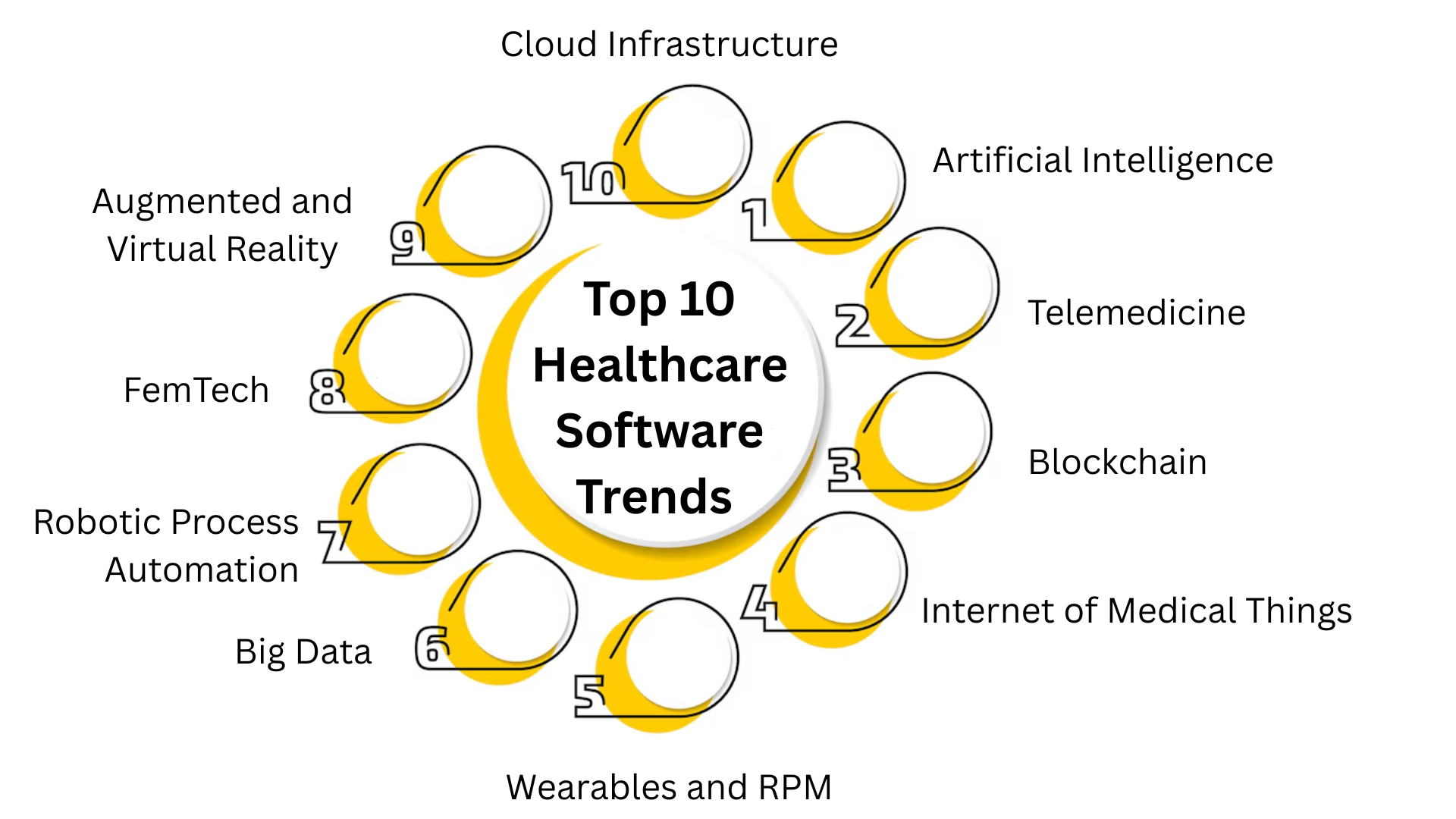
1. Artificial Intelligence (AI) in Healthcare
AI isn’t just hype anymore. It’s the real deal. It’s helping doctors spot diseases faster, tailoring treatments to individual patients, and even predicting outbreaks. The healthcare AI market? It’s skyrocketing at a 38.6% CAGR.
Who’s Doing It: Amazon (via AWS), Nvidia (think AI imaging), Microsoft (with Nuance for clinical notes), Philips (AI-powered scans).
How to Jump In: Don’t overthink it, start small. Use AI to tackle mundane tasks like sorting X-rays or flagging abnormal lab results. No PhD in tech required, tons of plug-and-play tools are out there to get you going.
One practice we worked with made skin cancer detection more accurate and faster with AI/ML analysis.
2. Telemedicine and Virtual Care
Raise your hand if you’ve ever waited an hour in a germ-filled waiting room for a five-minute checkup. Yep, telemedicine is waving goodbye to that nonsense. Virtual visits and remote monitoring are now standard, with the market zooming toward $160.13 billion by the end of 2025.
Who’s Leading: Teladoc Health, Amwell, MDLIVE
How to Jump In: If you’re not offering virtual care yet, start simple. Get a HIPAA-compliant telehealth platform developed and test it with a few patients.
At SynergyTop, we have developed a healthcare web app that connects patients with physical therapists. Want a similar solution? Talk to our experts here.
3. Blockchain for Secure Health Data
Blockchain sounds like a buzzword an IT guy would throw around to sound cool, but hear us out: it’s like a vault for your data. It’s perfect for keeping records safe and shareable. The market hit $7.04 billion in 2023 and expected to grow at more than 63% CAGR till 2030
Who’s Doing It: IBM, Guardtime
How to Jump In: You don’t need blockchain for everything. Focus on pain points like sharing EHRs across providers or tracking prescriptions. A potential use case could be to streamline consent forms and cut paperwork time drastically.
4. Internet of Medical Things (IoMT)
Imagine devices communicating freely with each other: a smartwatch pings a doctor when your heartbeat is irregular, or a hospital bed flags a patient’s fever. That’s IoMT, and it’s making care proactive. The market’s set to top $276.85 billion by 2025.
Who’s Leading: Medtronic, GE Healthcare, Philips
How to Jump In: Look at your workflow and try to understand what could real-time data fix? For chronic patients, wearables can track vitals and cut ER visits. Pick one use case and scale from there.
5. Wearables and Remote Patient Monitoring (RPM)
Wearables aren’t just for gym buffs anymore. They’re legit medical tools. From heart rate to oxygen levels, they’re keeping tabs on patients outside the clinic. The market’s growing at a strong 12.7% CAGR through 2030.
Who’s Doing It: Apple (Apple Watch), Fitbit (Google), Garmin
How to Jump In: Use RPM to catch issues early. A diabetes patient with a smart glucose monitor, for example, can avoid emergencies. And your team gets the data without lifting a finger. Just make sure it syncs with your system smoothly. .
6. Big Data and Predictive Analytics
Data’s only useful if you use it. Predictive analytics turns numbers into crystal balls. It helps in spotting trends, optimizing staff schedules, even predicting patient risks. The market’s headed past $540 billion by 2035.
Who’s Leading: SAS, IBM Watson Health, Oracle Health
How to Jump In: First, get your data house in order. Make it clean, organized, and ready for processing. Then, layer on analytics.
7. Robotic Process Automation (RPA) in Healthcare
Admin tasks are the worst. Endless forms, billing headaches, scheduling chaos. RPA’s like a robot assistant that never sleeps, and the market is set to jump to $2.06 billion in 2025.
Who’s Doing It: UiPath, Automation Anywhere, Blue Prism
How to Jump In: Pinpoint your biggest time-suck, for example, insurance claims, and automate it. Start with one process, then expand as you see the wins.
8. FemTech and Women’s Health Software
Women’s health is finally getting its moment. FemTech – think fertility trackers, menopause apps – is booming, with the market expected to climb from $9.12 billion in 2025 to $28.89 billion by 2032.
Who’s Leading: Flo Health, Clue, Natural Cycles
How to Jump In: Listen to your female patients and understand what they need. You can even start simple by adding a period tracker to your portal or building a pregnancy support tool. It is good for engagement and patient education too.
9. Augmented and Virtual Reality (AR/VR) in Healthcare
AR/VR isn’t sci-fi, it’s here and it is revolutionizing care delivery. Surgeons today use it to practice tricky operations, and therapists use it to help patients conquer fears. The healthcare AR/VR market is on track for $22.43 billion by 2034.
Who’s Doing It: AccuVein, EchoPixel, Medical Realities
How to Jump In: Test it where precision matters. VR for PTSD therapy? AR for surgery planning? Pick the most complex areas and start with a pilot to see the max outcomes with the least risk.
10. Cloud Infrastructure and Interoperability
Healthcare data should flow like a river, not get stuck in silos. Cloud systems make that happen – secure, scalable, shareable. The market is forecasted to grow a 16.66% CAGR between 2025 and 2030.
Who’s Leading: Epic Systems, Cerner (formerly Oracle), Athenahealth
How to Jump In: Pick a cloud platform that plays nice with HL7/FHIR standards, think labs, pharmacies, insurers, all in sync. We developed a data tracking platform for a medical practice and with automated reminders to fill surveys, they saw a 40% increase in patient reported outcomes. The results? They could drastically improve treatment plans with the data that was available at their fingertips.
Final Thoughts
Picking a trend isn’t about chasing shiny objects. It’s about what moves the needle for your patients and team. We’ve seen it all at SynergyTop: a telemedicine app that slashed no-shows, an AI tool that caught a rare diagnosis. The trick? Start with your biggest headache and match it to the right tech.
Feeling lost? We get it, tech can be a maze. Schedule a strategy session with our healthcare technologists to brainstorm your next step. No pressure, just practical advice.





